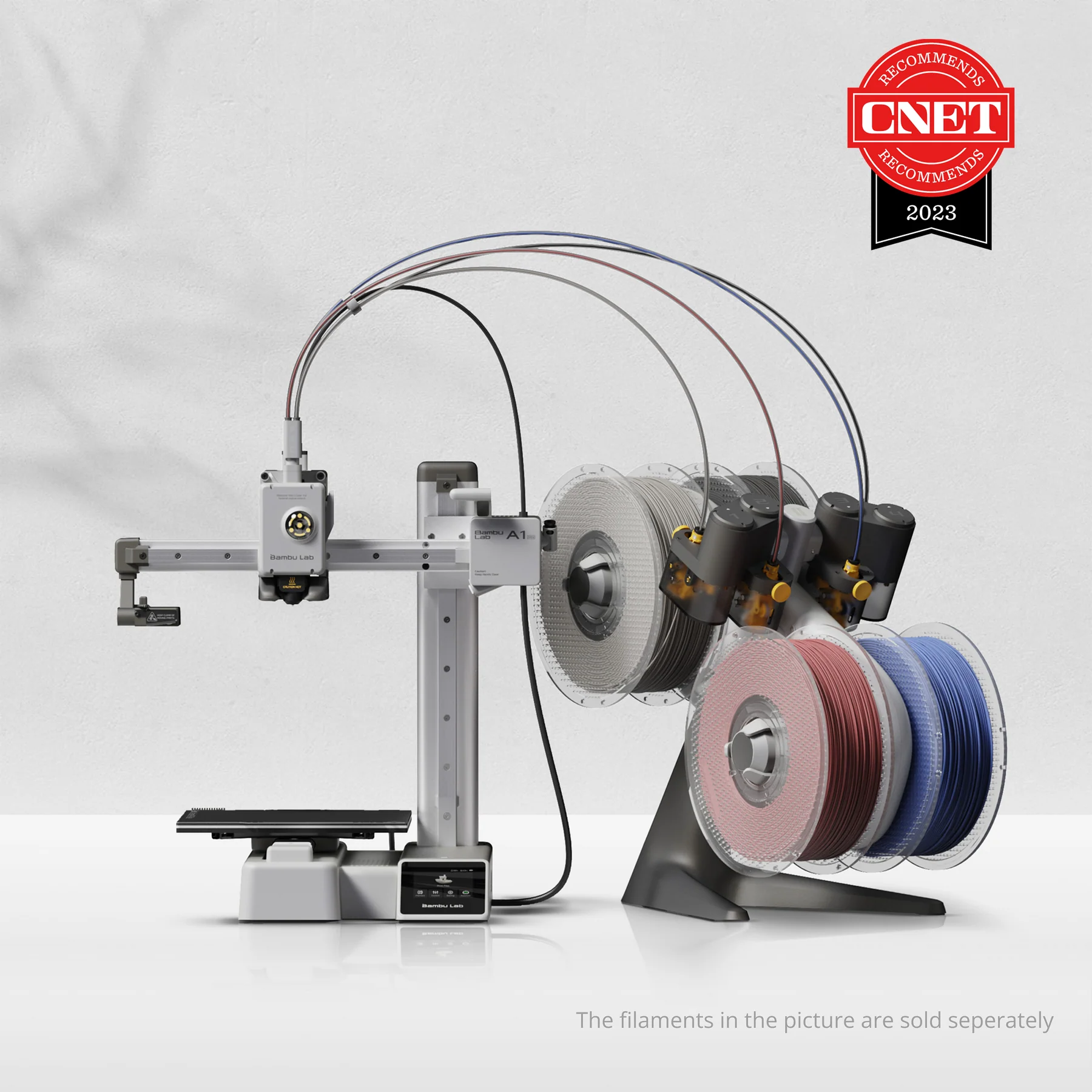Compare A1 Mini vs K1 Max
Comparison between the best 3D printers
Choose the best 3D printer at the best price. The cheapest 3D printers are here.
Buy a 3D printer here with 3D Fila.
 |
 |
|
| Model | A1 Mini |
K1 Max[BUY K1 Max] |
| Printing Material | Filament | Filament |
| Buy Filament for Bambu Lab A1 Mini | Buy Filament forCreality 3D K1 Max | |
| Estimated price | $549,00 | $1300,00 |
| Manufacturer | Bambu Lab | Creality 3D |
| Release Year | 2023 | 2023 |
| Print Volume [mm] | 180x180x180 | 300x300x300 |
| Printer Size [mm] | 315x347x365 | 435x462x526 |
| Weight [kg] | 5,5 | 18 |
| Power Loss Recovery | YES | YES |
| Enclosed printer | NO | YES |
| Bed Leveling | Automatic | Automatic |
| Filament End Sensor | YES | YES |
| Bed type | Heated | Heated |
| Power supply system | Direct Drive | Direct Drive |
| Standard nozzle | 0,4 | 0,4 |
| Maximum Nozzle Temperature [°C] | 300 | 300 |
| Maximum Bed Temperature [°C] | 80 | 100 |
| Maximum printing speed [mm/s] | 500 | 600 |
| Filament holder | YES | YES |
| Camera for supervision | YES | YES |
| Recommended filaments | PLA, PETG, TPU, PVA | ABS, PLA, PETG, TPU, PA, ASA, PC, PLA-CF, PA-CF, PET-CF |
| Recommended slicers | Bambu Studio, Super Slicer, Cura, Prusa Slicer, Orca | Creality Print, Cura, Simplify, Slic3r, IdeaMaker e outros |
| Maximum Resolution [mm] | 0,1 | 0,1 |
| Processor | 32-bit Silenciosa | |
| Display | Touchscreen 2,4'' | Display touchscreen 4,3'' |
| Power Supply | 150 W | |
| Connectivity | Wifi, Bambu bus, Cartão SD | USB / Wi-Fi / Ethernet |
| Operating systems | Windows, Linux, Macbook | Windows, Mac, Linux |
| Date of registration in the system | 2024-04-10 | 2023-12-01 |
| Release date | 2023 | 2023 |
| Extra features | The Bambu Lab A1 Mini stands out not only for its impressive speed and automatic calibration, but also for its multi-color printing capability thanks to AMS Lite. This innovative system makes multi-color printing easy, making it accessible to everyone. AMS Lite, specific to the A1 Mini, supports up to four different materials simultaneously, providing creative freedom without complications. With comprehensive sensors for energy monitoring and recovery, a camera for timelapses and Wi-Fi control, the A1 Mini and AMS Lite together offer an intuitive and advanced 3D printing experience, ideal for materials such as PLA, PETG and TPU, and designed for simplicity and fast maintenance with quick-change nozzles. | The Creality K1 Max stands out as a fast Core XY 3D printer with a large build volume of 300 x 300 x 300 mm. It is fully enclosed and equipped with AI sensors to prevent print failures. This model has a smooth and flexible PEI build platform, and uses an automatic leveling system with LIDAR, as well as a filament run-out sensor. LAN, Creality Cloud and USB Flash Disk connectivity are available, as well as a 4.3-inch touchscreen interface. The K1 Max is robust, weighing in at 18 kg, and includes an AI camera and limited version of the Klipper firmware. Its motion system is solid and the printer is efficient with high-temperature filaments, but it is not silent. Assembly is 99% complete, requiring only minor adjustments before use. |
| Support for multiple colors and materials (AMS and CFS) | YES | NO |
Notes * |
||
| Cost-benefit | 7 / 10 | 7 / 10 |
| Hardware | 4.2 / 10 | 4.2 / 10 |
| Tela | . | . |
| Print volume | 3 / 10 | 4 / 10 |
| Performance | 4 / 10 | 5 / 10 |
| [BUY K1 Max] |
Conclusion |
| In comparing the Bambu Lab A1 Mini and the Creality 3D K1 Max, both printers showcase impressive features tailored to their respective target audiences, but they cater to different needs and budgets. The A1 Mini is notably more affordable and compact, making it an appealing option for hobbyists and beginners looking for a user-friendly experience. With its innovative AMS Lite system for multi-color printing and a focus on materials such as PLA, PETG, and TPU, it excels in versatility while maintaining a rapid printing speed and simplifying maintenance tasks. It is designed with advanced features such as power loss recovery and a camera for supervision, ensuring a reliable printing process while being lightweight and easy to handle. On the other hand, the K1 Max offers a larger build volume, making it better suited for professionals and users who require more robust printing capabilities. Its fully enclosed design and high-temperature resistance allow for a wider variety of filament options, enhancing its versatility for advanced printing projects. The inclusion of AI sensors and an automatic leveling system with LIDAR enhances its reliability, although it comes at a higher price point and weight. Ultimately, the choice between the two depends on your specific needs: if budget and simplicity are your priorities, the A1 Mini stands out as an excellent choice; however, if you seek greater print volume and material flexibility at a higher investment, the K1 Max is worth considering. Both printers demonstrate strong performance and innovative features, making them top contenders in the 3D printing market for 2023. |

